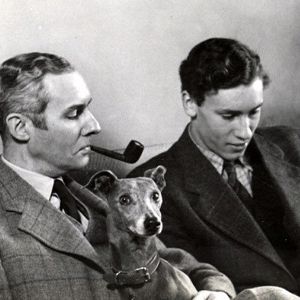MAR 08, 2022
Notable Dates in Ophthalmology — Winter 2022
10 years ago (2012): Researchers at Oregon Health Science University reported that new advances in anterior segment tomography (OCT) technology development allow visualizing fine angle structures within the anterior chamber angle of the eye. For example, utilizing high speed and high-resolution Fourier-domain (FD) OCT instruments working at 840nm, can reliably identify Schwalbe’s line.
25 years ago (1997): Claes H. Dohlman, MD of the Massachusetts Eye and Ear Infirmary at Harvard published his experience with keratoprostheses. These indicated significantly improved results from previous reports.

Dr. Dohlman pictured at age 17 with his father and whippet, “Jack”.
50 years ago (1972): Cornelius D. Binkhorst in the Netherlands devised a new intraocular lens procedure consisting of extracapsular cataract extraction with implantation of his iridocapsular lens into the posterior chamber. Fixation to the capsular remnant was stated to immobilize the lens and protect the corneal endothelium.
100 years ago (1922): Insulin was isolated by the Canadians Frederick Banting and Charles Herbert Best under the direction of John James Rickard Macleod at the University of Toronto.
250 years ago (1772): Jean Janin (1731-1799) an ophthalmic surgeon in Lyon published Memoir et observations sur l’oeil that described the use of convex lenses to see distant objects. Janin operated with great skill and published observations on cataract, the lacrimal apparatus and binocular vision.
500 years ago (1522): In Britain at this time, surgery –including eye surgery-- was performed by barber-surgeons, it was becoming regulated and organized under royal charters. “Companies” were thus organized that eventually evolved into the Royal Colleges of Surgeons in Scotland and England. Physicians and surgeons united in a single organization in Glasgow, and a college of physicians was founded in London.
1000 years ago (1022): The medical school in Salerno, Italy, founded approximately 200 years earlier as the first medical school in Europe, was now prominent. It attracted students from Europe, Asia and Africa and served as a model for medical schools established in Padua, Bologna, Montpellier, and Paris.